Q2 2024 News and Changes
An overview of what changed at PW in the second quarter of 2024
 Our summer 2024 interns
Our summer 2024 interns
April
News
HPCwire interviewed Joey Lin, our systems intern from the summer of 2023. Joey talked about her interest in PW’s mission to simplify HPC as well as her accomplishments during the internship: enhancing automated testing processes and integrating tools to assess system performance and reliability. You can read the full interview here.
We’re also excited to announce that Joey will be joining us full-time this July as an HPC Systems Engineer!
Updates
We added the Feature Preview to our platform, which allows users to test upcoming features before they’re integrated. Go to your username > Feature Preview to see upcoming changes.
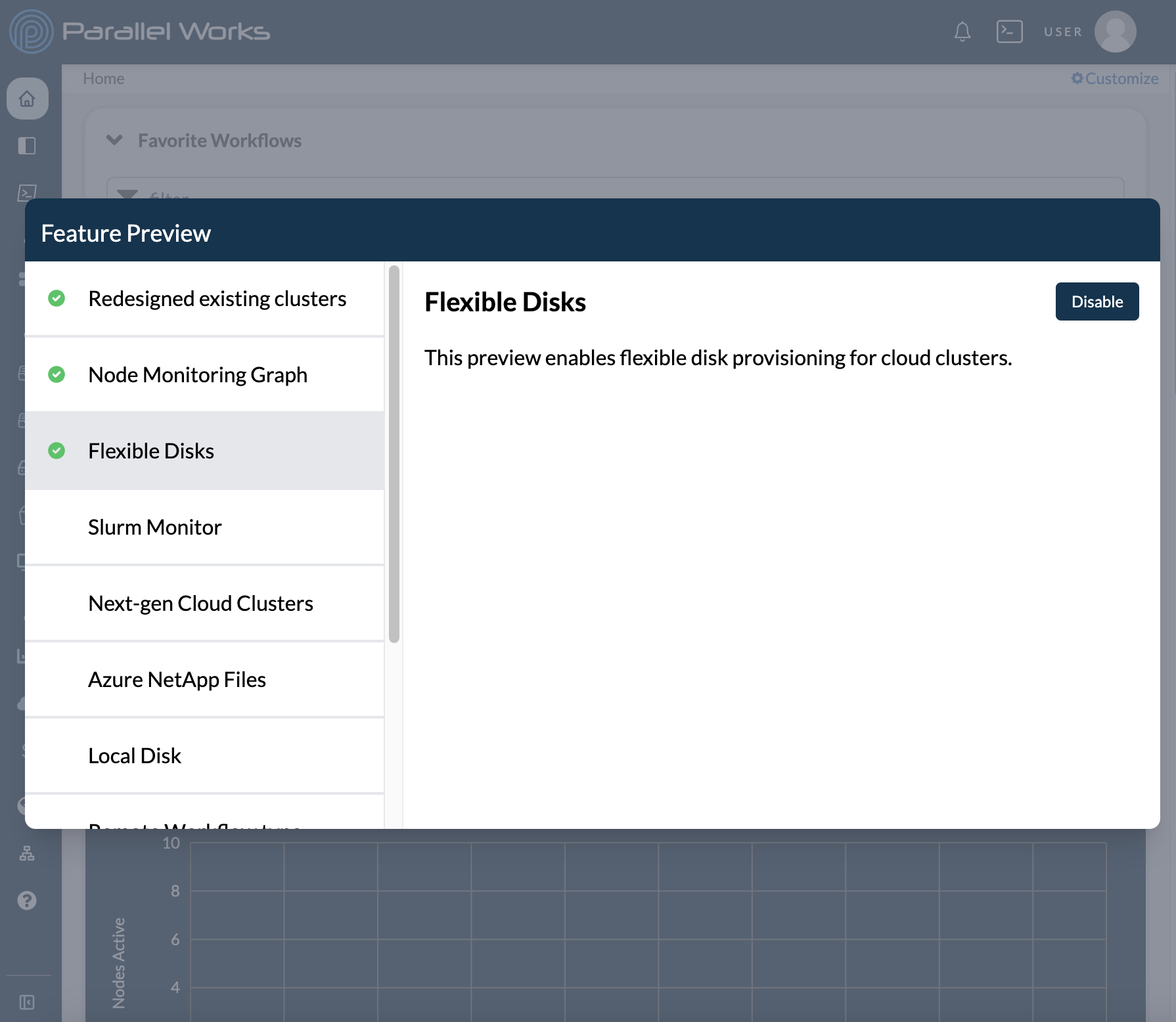
May
We added several new storage options for users, including:
- Azure Blob Storage
- Azure Files
- Azure Managed Lustre
- Flexible Disks
For more information about flexible disks, please see this blog post.
We’ve updated our page Configuring Storage to reflect these changes.
June
News
Since 2022, PW has been working with the Defense Innovation Unit (DIU) to create a prototype platform that will expand the computing capabilities for the Department of Defense (DoD). The DIU recently announced our successful completion of the prototyping phase. We’ll be transitioning to a production contract for this project later this year. You can read more in the DIU’s press release here.
We're also excited to announce our five new interns for the summer of 2024!
- Vishal Potineni - Sales
- Zhen Lu - Core Platform
- Grey Singh - Core Platform
- Daniel Mata - Technical Writing
- Lola Obielodan - Workflow Development
 From left to right, top to bottom: Zhen, Daniel, Lola, Vishal, and Grey
From left to right, top to bottom: Zhen, Daniel, Lola, Vishal, and Grey
Updates
We've added a new tool that makes selecting instances even easier than before.
On the configuration page of any cluster, click See all sizes beneath Instance Type.
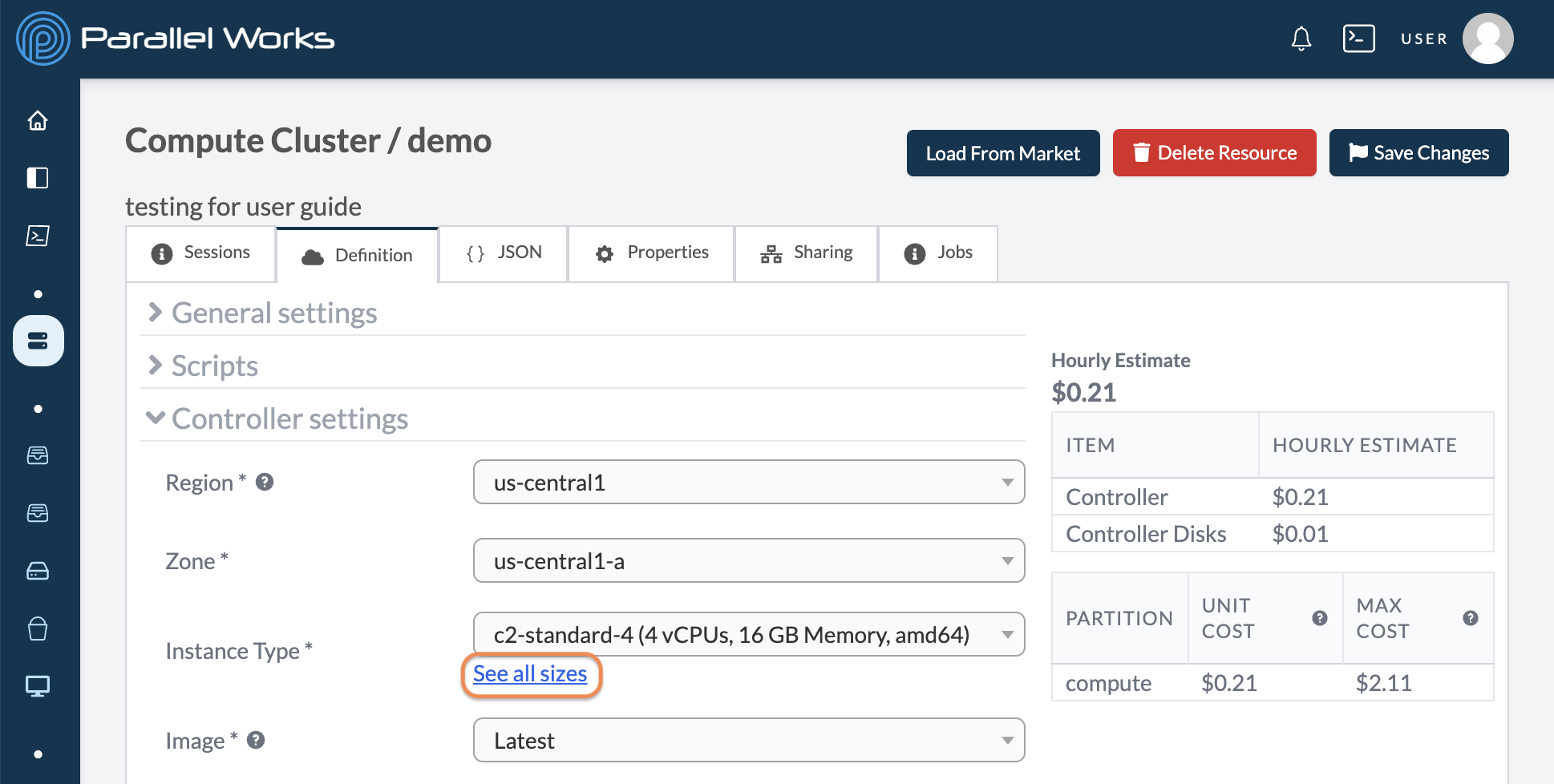
A pop-up will appear that explains all the possible instances for that cluster, including:
- Virtual Machine (VM) Type
- Architecture
- Virtual Central Processing Units (VCPUs)
- RAM (in GiB)
- Cost/Hour
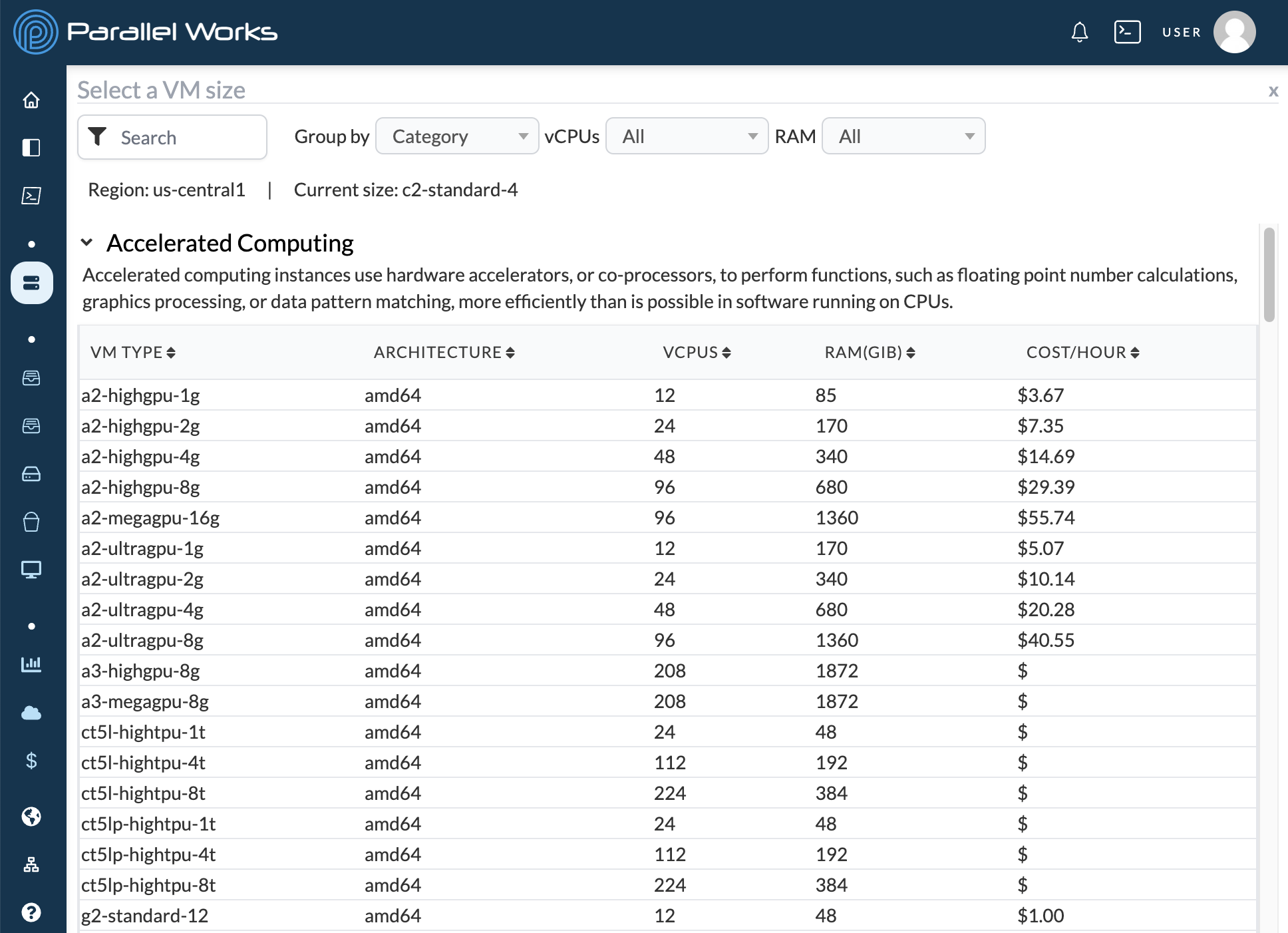
Upcoming Changes
Redesigned Existing Clusters
We’ve redesigned the way that users connect to existing clusters. The new method, called HPC Connect, makes it faster, easier, and safer to access an organization’s on-premises system. We’ll be releasing this new feature within the next two weeks.
V3 Workflows
We'll be launching v3 workflows within the next two weeks. This update is designed to make workflow creation easier for users, both with our new interactive workflow editor and the switch from xml files to yaml files.
UI Layout Refresh
In the coming week, we’ll be releasing a major update to our user interface (UI). The new design replaces the navigation banner at the top of the platform with an expandable sidebar. Users will be able to manage and monitor their resources more easily with dedicated pages for each type of monitor, compute resource, and storage resource.
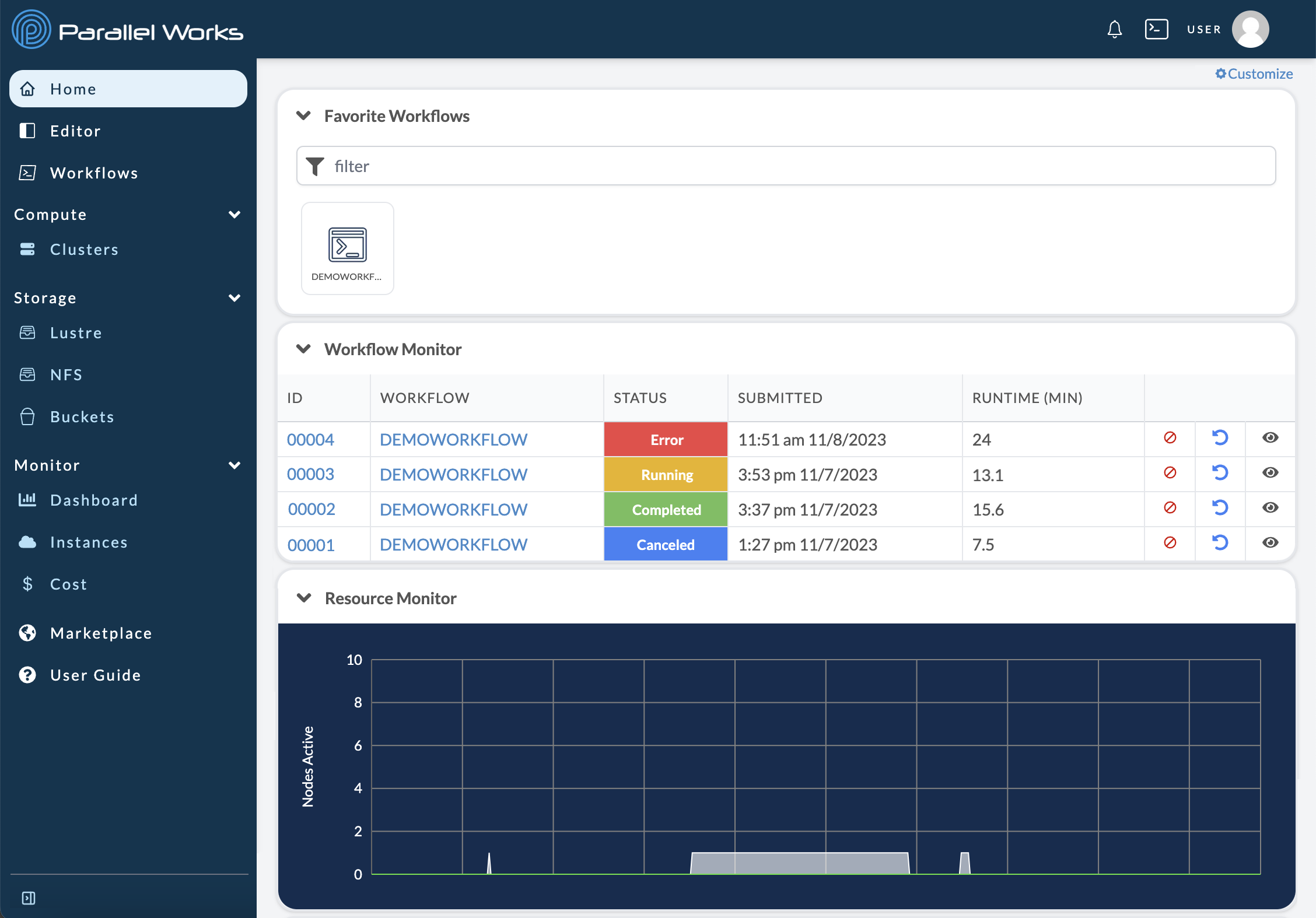
The new UI also includes a major update to our terminal interface. When you click the terminal icon next to your username, a pop-up terminal will appear at the bottom of your screen. You can continue to navigate around the platform while working with your files in the terminal.
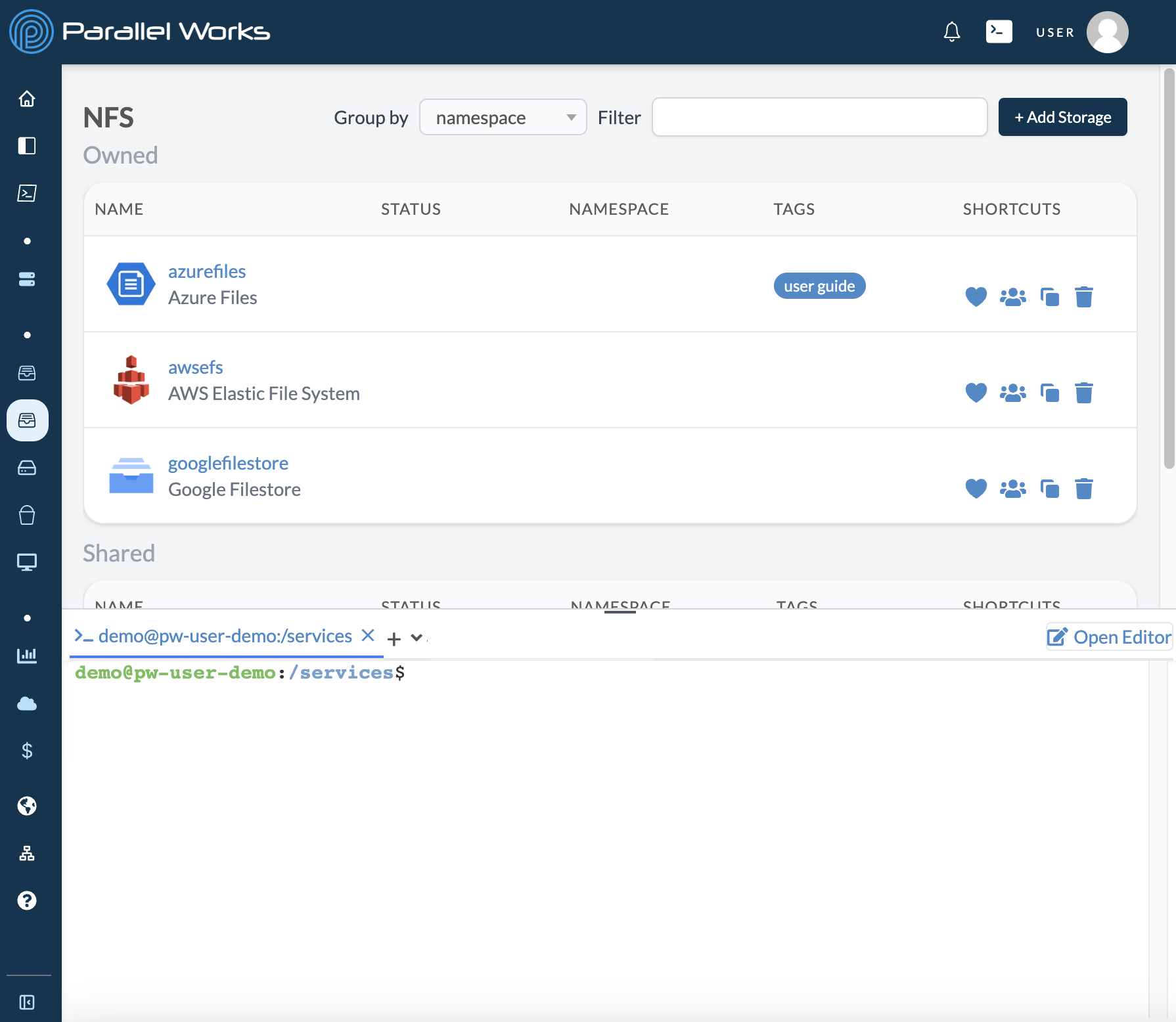
Azure NetApp Files
We'll be adding another storage type soon, Azure NetApp Files. In the new UI, this option will be available on the NFS page.

Local Disks
We'll be adding support for local disks, which are only supported on Azure instances. They are free to use, but not included with all instance types. You can see whether an instance supports local disks by using the instance selector, mentioned above.
By default, local disks will appear at /mnt/resource on an eligible VM. This location can be overridden by users. You can also NFS export a local disk mounted on the controller to the cluster, which works the same way as NFS exporting a normal disk. The local disk will auto mount on all compute nodes at the same mount point defined on the local disk (by default, /mnt/resource).
